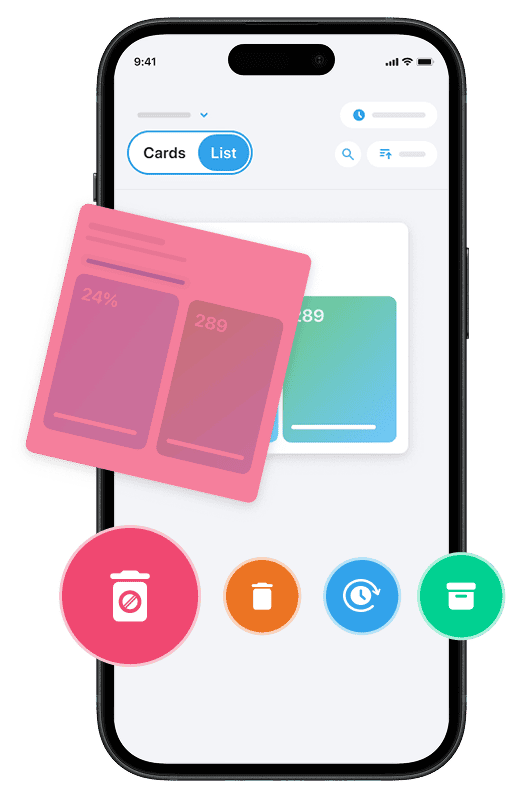If you’ve ever asked yourself how to reduce screen time, you’re certainly not alone. In today’s digital era, screens—from phones and tablets to TVs and computers—are everywhere, making it increasingly difficult to disconnect. Excessive screen time can negatively impact your mental health, disrupt sleep, reduce family interaction, and take away from valuable real-life experiences.
Whether you’re a parent aiming to manage your child’s device use or an adult seeking to regain balance, setting effective screen time limits is essential for improving well-being and fostering healthier habits. Fortunately, by leveraging tools like the settings app on your device to set screen time and by embracing mindful routines, you can take control, reduce distractions, and cultivate a more fulfilling, screen-free lifestyle. To better understand mindful tech habits, explore what digital mindfulness really means and how it can reshape your relationship with technology.
This article will guide you through practical strategies and straightforward habits to help you and your family manage and lower time spent on screens each day.
One way to spend less time staring at screens is by keeping your inbox completely free of spam — and you can use our Cleanfox platform to do just that.
Understanding and Tracking Your Screen Time
1. Track Your Daily Screen Time
The first step to reducing screen time is getting a clear picture of how much time you actually spend on your devices each day. Many devices offer built-in tools in their settings app to track daily and weekly screen use. You can tap into these features to monitor the hours spent on different apps and media.
For example, Apple’s Screen Time and Android’s Digital Wellbeing show your usage trends, including app usage and how often you unlock your device. Alternatively, you can download dedicated screen time apps like RescueTime or Screen Time Tracker that provide detailed reports on your behavior.
This insight helps you identify which apps or screens consume most of your day and can be the foundation for setting personalized limits.
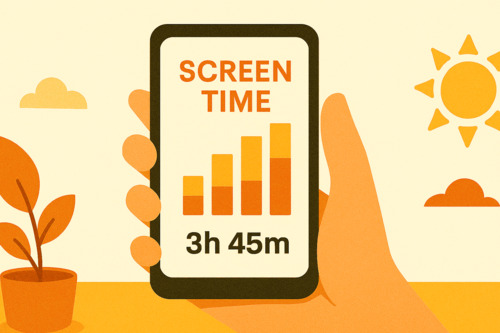
2. Set Realistic Screen Time Goals
Once you know your current screen habits, it’s important to establish achievable goals. Instead of abrupt or drastic reductions, aim for gradual decreases in time spent on your device.
Use the screen time settings to set screen time limits on distracting or social media apps that tend to eat up a lot of your attention. If you’re managing a child’s device, setting these limits within a family group can help create healthy time boundaries for all family members.
Setting specific time limits for each app or category encourages mindful use and supports your mental health by reducing excessive screen time.
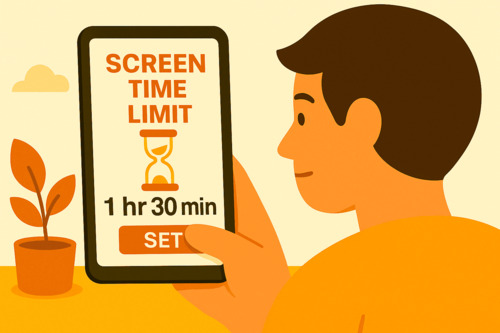
3. Keep a Log of Your Progress
Tracking progress is essential to maintaining motivation. Keep a simple log of daily or weekly screen time usage, noting improvements or setbacks.
Many apps offer automatic tracking, but you can also jot down your results in a journal or note app to visualize trends over time. Celebrate milestones when you hit your planned screen-free hours or successfully stick to your screen time limits. Keeping this log not only fosters accountability but also highlights what strategies help you reduce screen time effectively and when you might need to adjust your goals.
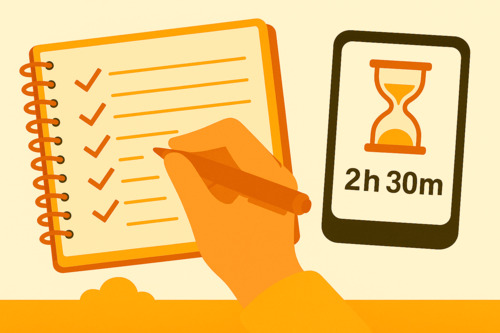
Implementing Screen Time Reduction Strategies
Say goodbye to spam, clutter, and chaos.
Our smart email cleaner filters out junk, organizes your inbox, and helps you focus on what really matters.
✅ Block spam automatically
✅ Organize emails by priority
✅ Keep your inbox clean
✅ Clean old emails you don’t read
📱 Available on the App Store and Google Play.
4. Establish Screen-free Zones
One effective way to reduce screen time is to designate certain areas in your home as screen-free zones. Common places like the dining room, kitchen, or bedrooms make ideal spots where screens and devices are not allowed.
This encourages deeper face-to-face interactions and stronger family connections by removing digital distractions during meals or before bedtime. Creating these zones also promotes better mental health and improves sleep quality, as avoiding screens—especially the blue light they emit—before going to bed helps regulate your natural sleep cycle.
Establishing tech-free areas fosters relaxation and physical activity, which are particularly important for children’s development.

5. Set Specific Times for Technology Use
Instead of sporadic device use throughout the day, try setting clear and consistent times when screens are allowed. For example, allot specific hours for checking social media, watching videos, or playing games, and stick to these time limits.
Having a structure helps everyone in the family group anticipate and control their screen usage. This approach also reduces impulsive tapping on screens and helps create a healthier rhythm that balances digital life with other important activities.
Using your device’s time settings to enforce these schedules can make it easier to manage.

6. Embrace the 20-20-20 Rule
To reduce eye strain and mental fatigue from prolonged screen exposure, adopt the 20-20-20 rule: every 20 minutes, take a 20-second break by looking at something 20 feet away. This simple habit can protect your vision and refresh your mind, making it easier to maintain focus during device use.
Incorporating regular breaks like this helps reduce the adverse effects of long time spent on screens and encourages a mindful approach to digital consumption.

7. Replace Screen Time with Other Activities
Reducing screen time is easier when you fill those free moments with enjoyable alternatives. Engage in physical activities, hobbies, reading, or family games that promote creativity, learning, and connection.
Outdoor time is especially beneficial for your health and provides a break from digital distractions. When children and adults alike find fulfilling substitutes for screen use, it creates a sustainable way to maintain lower screen time limits and improves overall well-being.
Constantly reducing screen time by swapping screens for real-world experiences will help your whole family thrive both offline and online.

Maintaining Long-Term Success
8. Use Technology to Your Advantage
Ironically, technology itself can be your ally in the battle to reduce screen time. Both Apple and Android devices come with built-in features like Screen Time and Digital Wellbeing, which allow you to monitor your usage and set app-specific limits. These tools enable you to set time limits on social media or games, sending you a notification when your allocated screen time runs out.
If you need stronger boundaries, third-party apps like Canopy, Qoli, Space, or Freedom offer even greater flexibility. They allow you to set screen time across all your devices, schedule screen-free hours, or block distracting websites. The goal is not to rely on willpower alone—let technology help you stay accountable and maintain balance.
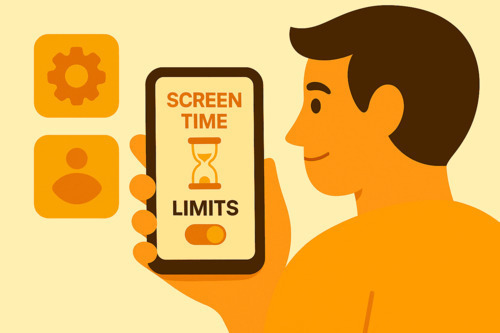
9. Be Mindful of Content Consumption
Not all time spent on screens is equal. Strive to be intentional about the content you consume by asking yourself whether it’s benefiting your mental health or simply filling time.
Focus on educational, creative, or meaningful interactions, and filter out low-value or triggering content. Many parental control and digital wellness apps allow you to select which apps or websites are accessible on your child’s device or within your family group. This makes it easier to build healthier digital habits.
By deliberately choosing your online activities, you’ll naturally spend fewer hours a day mindlessly scrolling and more time engaging in enriching and fulfilling experiences.
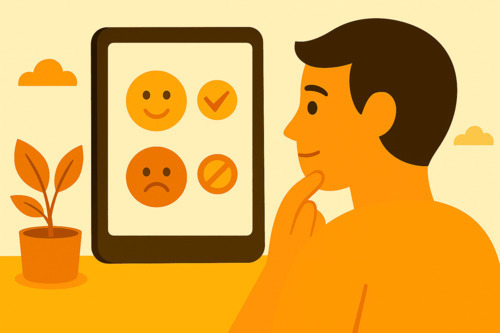
10. Lead by Example
Changing habits—especially those involving screens—is easier when everyone in the household is on the same page. If you want your family to reduce screen time, start by modeling the behavior you wish to see. Put away your phone during meals, read a book instead of watching TV, and consistently follow your own screen time limits.
When children and other family members see you prioritizing real-life interactions and turning screen time into quality time, they are more likely to follow suit. Developing healthier, less screen-dependent routines is a collective journey—one that begins with your example and commitment.

Conclusion 💡
Reducing screen time is essential for enhancing both mental and physical health, strengthening family connections, and achieving a more balanced lifestyle. Begin by understanding and tracking your current screen habits, then set realistic screen time limits using your device’s settings app.
Adopt strategies such as creating screen-free zones, scheduling specific times for device use, and replacing screen time with other meaningful activities. Keep in mind that long-term success relies on using technology wisely, being mindful of the content you consume, and leading by example. Take action today to empower yourself and your family to reclaim precious time offline.
FAQ 📘❓
How can setting realistic goals help me reduce my daily screen time effectively?
Setting realistic goals is essential for effectively reducing daily screen time. It breaks the process into manageable steps, preventing overwhelm and increasing the likelihood of success. By encouraging gradual habit changes, these goals make limits easier to follow and help maintain sustained motivation over time.
Using tools like screen time tracking and app limits can further reinforce these goals, ensuring a smoother transition to healthier screen habits.
What are some practical strategies to create phone-free zones at home to minimize screen distractions?
Creating phone-free zones at home can significantly reduce screen distractions. Some practical strategies include:
- Designating specific areas like dining rooms or bedrooms as tech-free zones.
- Setting clear rules and device-free times, such as during meals or before bedtime.
- Using reminders like signs to reinforce the phone-free environment.
- Establishing device-free routines like family games or walks.
Leading by example is important for ensuring the success of these strategies.
How can I engage my family or children to willingly participate in reducing screen time?
Engaging your family or children in reducing screen time starts with setting clear and realistic goals together. Communicate why this change is important and involve everyone in the decision-making process. Establish screen-free zones, such as during meals, and gradually reduce screen usage over time.
Replace screen time with fun outdoor activities or new hobbies that everyone can enjoy. Be fully engaged and model the behavior yourself to inspire participation. Making the change positive, gradual, and inclusive will lead to better success.
Are there any tools or device features that can help me monitor and limit overall screen usage?
Yes, there are several tools and device features available to monitor and limit screen usage effectively:
- Qustodio: Offers custom daily time limits on apps and devices, web filtering, detailed reports, and alerts for overuse, making it ideal for managing kids’ digital habits.
- Norton Family: Allows scheduling screen time limits and content filtering on Android, iOS, and Windows, with emergency call access even after limits are reached.
- FamilyKeeper: Provides simple screen time management and geo-fencing, suitable for older kids using mobile devices.
- MonitUp: Tracks app and website usage on Windows PCs in real time, offering productivity insights and AI-driven suggestions for smarter work.
These tools support healthy screen habits by monitoring usage, limiting time, and filtering content across various platforms.
Enjoyed this article? Dive deeper into Healthy Digital Habits with our post: ‘10 Simple Ways to Break Your Cell Phone Addiction.‘ And don’t forget to explore our blog for more helpful tips!



